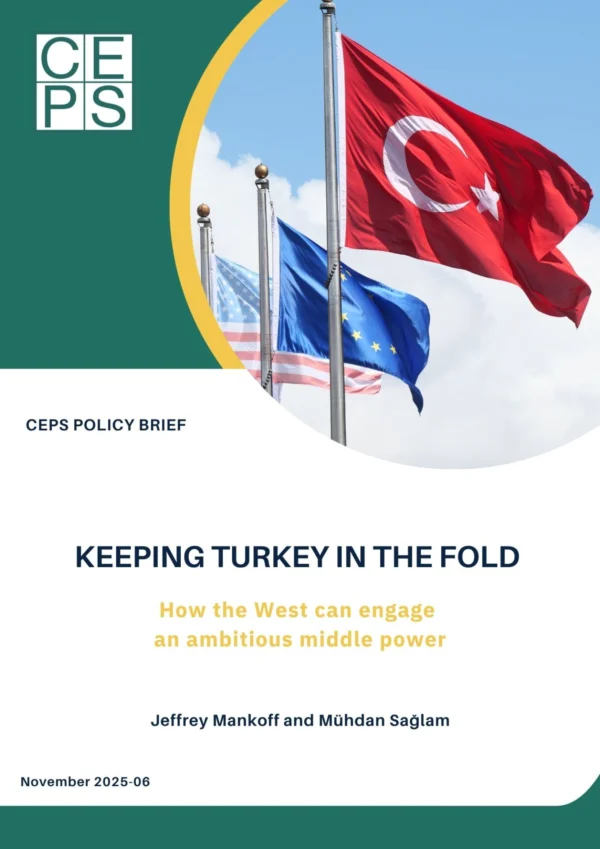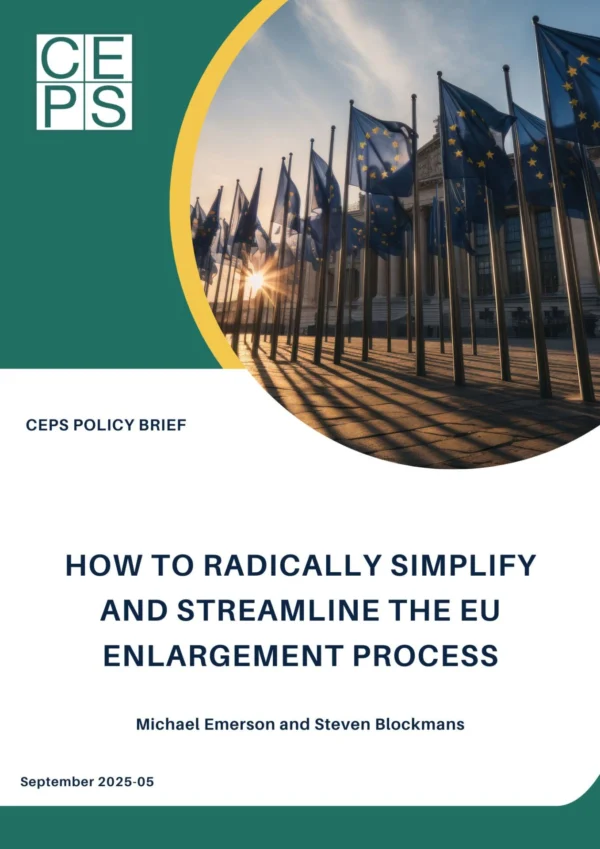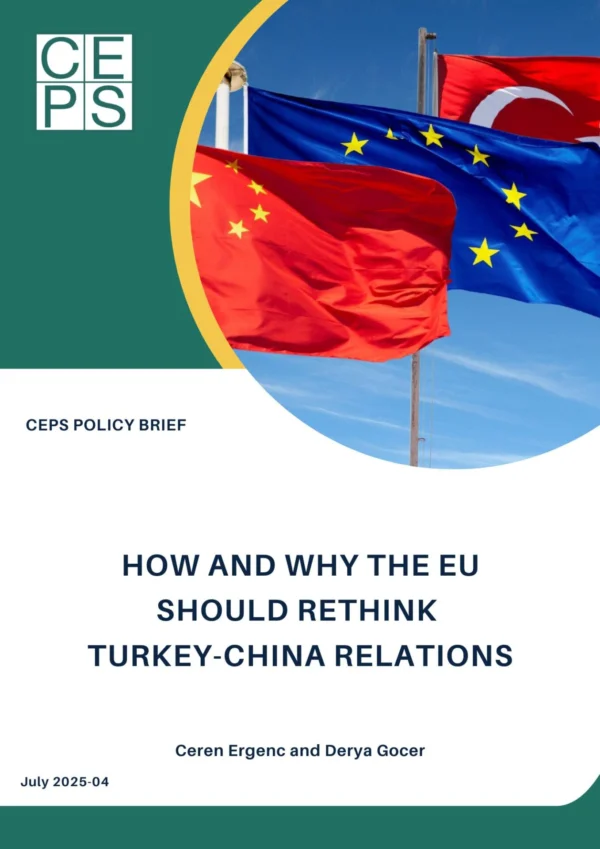Despite much political hyperbole, the 5th Eastern Partnership Summit on November 24th will hopefully chart a pragmatic way forward in a host of sectors for citizens living in the region.
Summits are glitzy events that bring together the highest level of officials – the heads of state and government. These occasions naturally attract the interest of both the media and the public, raise expectations, increase tensions, create drama and heighten the rhetoric – but sometimes they end in disappointment. And this is exactly what the EU would like to avoid in the upcoming 5th Eastern Partnership (EaP) summit, which will bring together most of the leaders of the EU and its Eastern partners – namely Armenia, Azerbaijan, Belarus, Georgia, Moldova and Ukraine – on November 24th in Brussels. The summit will be essentially a stocktaking exercise in which its principals reflect on the difficulties that the Partnership has encountered and the reforms it has undertaken to meet and mitigate the growing challenges. But more importantly, in the midst of the political hyperbole, the summit will aim to chart a pragmatic way forward to bring about tangible and positive results for citizens in a host of sectors ranging from energy efficiency and transport to youth employment and SMEs.
A turbulent path to the Brussels summit
The path to the Brussels summit has taken the Eastern Partners on a rather bumpy ride. Initiated by Poland and Sweden in 2009, the Eastern Partnership was the product of a delicate balancing act between the interests of the EU member states, some of which had prioritised the Southern Mediterranean and others Eastern Europe.
The Eastern Partnership has had serious implications for domestic change in the Eastern neighbourhood countries. For the first time since the collapse of the Soviet Union, the EU’s relationship with its Eastern neighbours has moved from a less intrusive legal order of Partnership and Cooperation Agreements (PCAs) to the sphere of an extensive hard law. Being modelled on the EU enlargement policy, the Eastern Partnership brought an extensive EU acquis with the aim of deepening the political and economic ties, and fostering people-to-people contacts between the EU and its Eastern neighbours. It offered the possibility for visa-free travel to the Schengen Area, and the deepest and most comprehensive contractual relations that the EU has ever extended to third countries through the Association Agreements, including the Deep and Comprehensive Free Trade Agreements (DCFTA).
Yet three major shortcomings illustrate the challenge of the Eastern Partnership to deliver on its promise to serve “the shared commitment to stability, security and prosperity of the European Union, the partner countries and indeed the entire European continent” (Prague Summit Declaration, 2009).
First, despite generally following the logic of accession, the EU’s offer has been limited and did not explicitly include a membership perspective. However, the preamble of the Association Agreements alludes to the aspirations of the Eastern Partnership countries to join the EU and any of them could theoretically meet the conditions of the EU membership clause enshrined in Art. 49 TEU. Nevertheless, after the Dutch referendum on the Association Agreement with Ukraine on 6 April 2016, the Netherlands insisted on a language of the European Council of 15 December 2016 that waters down existing theoretical prospect of accession. At 5th Eastern Partnership Summit the EU is as divided as ever with the Netherlands, France, Italy, Spain and Germany vehemently opposing membership, while the Baltic and the Visegrad Four states are arguing on behalf of creating a membership path precisely for the Eastern neighbours.
Second, despite the rhetorical commitments by the leadership of the Eastern Partnership countries, the progress achieved in domestic political and economic reforms has been uneven and slow. The lack of checks and balances among three branches of government (namely, executive, legislative and judiciary), weak and dependent judiciaries, oligarchism and endemic corruption remain grave obstacles even for countries that have concluded an Association Agreement and a DCFTA with the EU.
Third, Russia is challenging the EU’s role in the Eastern neighbourhood through more aggressive stands vis-à-vis the countries of the EaP. Russia views the Eastern Partnership as a threat that inspired the various ‘colour revolutions’, which convulsed the countries located in its ‘near abroad’ in the common Russia-EU neighbourhood. Furthermore, the Kremlin has demonstrated that it is willing to use any means, including military intervention, to disrupt the integration of the Eastern Partnership countries into the EU. The Brussels summit declaration will not have any innovative language on Russia. It is likely to repeat reference to the EU’s openness to cooperate with 3rd countries on case-by-case basis. This is a repetition of what has already been written in the Vilnius summit declaration.
Expectations of neighbours vs. the EU’s offer
The Brussels summit will not upgrade the EU’s relations with Georgia, Moldova and Ukraine. The milestones in the EU’s relations with the DCFTA states such as enactment of the Association Agreements and granting visa-free travel to the EU took place in between summits. Moreover, if the latest EU-Ukraine summit is any indication, the EU will struggle to sustain what it has already offered. In particular, it has been challenging to continue to acknowledge the European aspirations of Georgia, Moldova and Ukraine. After some negotiations the EU member states agreed to acknowledge the membership aspiration of Georgia, Moldova and Ukraine similar to Riga declaration. However, this was balanced with the reference to the European Council of 15 December 2016.
This comes as a disappointment to the three DCFTA countries as they would like to see at least some steps taken that would put them between what they have, namely the Association Agreements and the DCFTAs, and what they aspire to have, i.e. the EU membership perspective. Ukrainian government and its lobbyists for example has lobbied for the EU-Ukraine customs union. Although this might be an attractive proposition for the Ukrainian government from a political point of view, it is likely be damaging to Ukraine’s interests. Not only will the country lose its autonomy to negotiate free trade deals, it will also experience ‘Turkey’s dilemma’ of having to accept the results of the EU’s international free trade agreements without having a say in their content.
Whereas Ukraine sees an upgrade in the relationship as an impetus for reform, including in the customs administration, many in the EU institutions and the member states view the implementation of the Association Agreement as a sufficient blueprint to generate change – at least initially. The EU’s message to associated countries is expected to be clear: implement the existing agreements before asking for new offers.
The 2015 ENP review pushed the policy to one with a more pragmatic direction. In particular, by incorporating differentiation, the revised ENP aimed to bring a new impetus to the EU’s relations with Armenia, Azerbaijan and Belarus. As far as non-associated countries are concerned, the Brussels summit would be a significant moment for EU-Armenian relations, as the parties might sign a new Comprehensive and Enhanced Partnership Agreement. The deal that was negotiated after the failure of the Association Agreement, including the DCFTA, will chart a new course for EU-Armenian relations. Concluding the ambitious bilateral agreement has been a challenging process. Yet, the implementation of the agreement promises to be an even more daunting task and one requiring ever-tighter monitoring by the EU. Pointing to its positive record in implementing visa facilitation and readmission agreements, Armenia agitates for but is unlikely to get the visa liberalisation action plan (VLAP) during the summit.
The ambitious nature of CEPA demonstrates that the existing narrative since 2013 that groups Armenia with Belarus and Azerbaijan does not take into account Armenia’s receptiveness of the EU’s template. More nuanced approach would differentiate not only between the DCFTA and non-DCFTA countries but also between the non-DCFTA states. In fact, Armenia is interested but not able to conclude a DCFTA with the EU because of its membership to the Eurasian Economic Union. Under certain conditions (e.g. WTO membership), Azerbaijan is able but not interested in the DCFTA. Belarus is neither interested nor able to conclude a DCFTA with the EU. The differentiated ENP provided for 3rd-way agreements in which the partners are invited to enhance their contractual relations with the EU according to their ability and desire, thus doing away with the one-size-fits-all approach that characterised the Association Agreements and the DCFTAs.
The deliverables for Belarus and Azerbaijan are expected to be rather modest. Belarus might showcase some progress achieved since the lifting of most EU sanctions and reinvigoration of bilateral relations. In particular, the EU-Belarus partnership priorities are likely to be ready for the summit. Although advocated by Belarus, the negations for bilateral agreement are not likely to start before the summit takes place. Nor is the agreement that is under negotiation between the EU and Azerbaijan likely to be concluded before the summit.
Therefore, as far as Azerbaijan and Belarus are concerned, the bar set for the summit is not very high. Simply having their Presidents present at the Summit would constitute an achievement. The President of Azerbaijan, Ilham Aliyev, skipped the latest Eastern Partnership summit in Riga in 2015, citing his disagreement with the language of the Summit Declaration on Nagorno-Karabakh. The EU has delicate a balancing act to perform. If the wording of declaration is too favorable to Azerbaijan, the President Sargsyan might skip the summit this time around. Moreover, the fact that the President of Armenia, Serzh Sargsyan, might sign an ambitious agreement with the EU in the margin of the Brussels summit makes Aliyev uneasy.
The President of Belarus, Alexander Lukashenko, has never participated in an Eastern Partnership summit. The EU extended an invitation to him this time around if there are no major negative developments in Belarus between now and the summit. Extending an invitation to the President Lukashenko will rectify the longstanding double standard that the EU has practised by inviting Aliyev but not Lukashenko. However, even if the EU does invite Lukashenko, his presence at the summit is not guaranteed.
Looking ahead
The Brussels summit will pose a break from the tradition of constantly updating the language and upgrading the EU’s offer in the framework of the ENP and the Eastern Partnership. There will be no grandiose announcements. The EU will aim to avoid the drama of the last two Eastern Partnership summits in Vilnius and Riga. And beyond the glitz and glamour of the summit, the event will offer an opportunity to showcase the achievements since Riga. And when all the fuss about the summit is over, the Eastern Partnership will be able to refocus on more practical gains. These include a whole host of sectoral cooperation from facilitating assess to finance for SMEs in local currency to an extension of the Ten-T transport investment plan to the Eastern partners and creation of Think Tanks Forum. Energy efficiency will remain an important component of cooperation. A large youth package and more support to civil society should also be announced at the Brussels summit, while the start of negotiations on eliminating roaming tariffs and enormous banking fees should not have to wait too long.
Moving forward, the relationship between the EU and its Eastern partners is likely to be focused on bridging the gap between the rhetoric of the European Neighbourhood Policy and the reality on the ground in the neighbouring countries.
Hrant Kostanyan is Researcher in the Europe and the World research unit at CEPS. This commentary was originally published as an editorial in the European Neighbourhood Watch newsletter, November 2017.
CEPS Commentaries offer concise, policy-oriented insights into topical issues in European affairs. As an institution, CEPS takes no official position on questions of EU policy. The views expressed are attributable only to the author in a personal capacity and not to any institution with which he is associated.
© CEPS 2017








